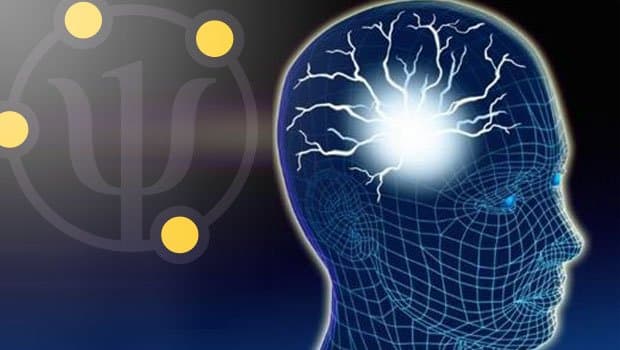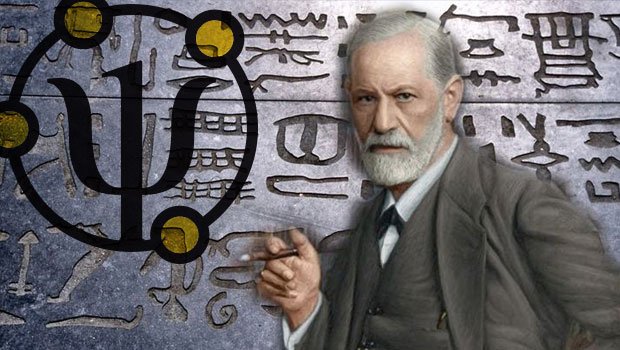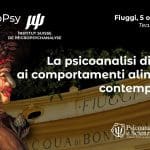Sommario
In the last decades there has been a lot of talk about the possible psychosomatic origin of many morbid forms and, among them, some authors have also inserted the oncologic process. In particular the frequent observation of the repeating of a determined psychic typification, also observed by myself 1 , let some researchers hypothesize the possibility of a remarkable influence of psychism on the structuration of illness. Furthermore some psychotherapists have even proposed to face the oncologic illness with psychotherapeutic treatments. What can be the scientific justifications for trying to treat a biological alteration with a psychological methodology?
A lot of psychoanalytic schools have elaborated models that postulate a deep body-mind synergy, some coming to theorize a genesis of conflict, and therefore an origin of somatopsychic pathologies, at a pre-psychic and pre-somatic level, substantially energetic.
I will immediately say that such a vision of phenomena, though supported in some cases with an elegant and coherent theoretical model of reference, doesn’t satisfy my deep convictions.
Firstly since I believe that the adhesion to a metapsychological model is a remarkable danger for the scientific nature of conceptualizations.
I would immediately like to specify: I don’t deny that, for minds using them with the due detachment and the necessary caution, the metapsychological hypotheses can be fertile associative inductors for the study in depth of new hypotheses of work, but we always ought to remember that models are just models, therefore instruments of reasoning, organizers of hypotheses, and they must never be confused with the reality of phenomena. From the dawning of science up to today every interpretative model has always sustained deep revisions, especially thanks to the acquisition of new and more powerful instruments of investigation, as the basic knowledge has been increased.
The readers who follow my contributions know that part of my training hinges on the clinical experience deriving from my practice, throughout twenty-five years of micropsychoanalysis. Even still today I consider the micropsychoanalytic technique of enormous therapeutic effectiveness in psychopathology, also heralding further and deeper theoretical elaborations, that I hope to be more and more linked with interdisciplinary verifications, but in the last years I have completely abandoned the use of the micropsychoanalytic formalism denominated dnv-ide (neutral dynamism of the void – instinct of attempt). The reason is that the existence of a failing of classical laws and the emerging of a quantum-like phenomenology in microscopic dimension (I translate that which Fanti has defined “Neutral Dynamism of the Void” as a physical language that is comprehensible to the majority) is already explainable in a simple and exhaustive way with the knowledge of the basic features of the quantum physics and it seems unsuitable to me to introduce lexical elements that can’t be shared, instead of easily understandable concepts by the scholars of the various disciplines (in all of my life I have always kept my distance from initiatory convictions, whether or not evident).
Not to mention that, people who do not have enough cultural solidity, can be inclined to attribute, to a model currently bordering on philosophical abstraction, a scientifically corroborated value.
Obviously such considerations don’t embrace the Freudian metapsychology since the hypotheses that Freud inserted in what he himself defined metapsychology (which seemed so audacious at the time of their formulation) have been widely verified and proved for over one century of experimental verifications and continue to be confirmed by other sciences. We could say with a paradox that the whole Freudian metapsychology has entered psychology by right.
The term “metapsychology” is met first of all in the numerous letters that Freud addressed to his colleague and friend Fliess. It was used by Freud to define the originality of his attempt to build a psychology “… that leads behind the conscience” in comparison with the former psychologies, a psychology by then proven even by neuroscientific researches.
The Freudian theme that mostly bridges psyche and soma, which is subject that interests us, is the one related to the etiopathogenesis of hysteria, a psychic affection with somatic symptoms. Obviously I don’t deny that a sinergy between psyche and soma exists, but my clinical experience makes me doubt the possibility that organic damages (to be precise the ones characterized by structural alterations, and not functional, of the cells) can be made reversible by a psychic treatment: software modifications don’t repair hardware damages. I am fully satisfied with Nicola Peluffo’s definition of psyche as “representation of the somatic processes”published in the seventies. Hysteria, as everyone knows, is an affection, to use a rather obsolete, but precise terminology, “sine materia”, that is characterized by the absence of organic damages; it shows itself with functional troubles, that can easily regress, in a way substantially definitive, with psychoanalytic treatment. Classical and definitive about its psychogenic origin it is the observation that the hysterical paralyses frequently strike territories that don’t correspond in a logical way to the territories of innervation (one of the semiologic signs that is helpful to us in the differential diagnosis with the organic paralyses). Hysteria is a symbolic performance of a traumatic past, a performance not only unconscious, but even preconscious: according to my opinion the hysteric knows, in a part of his psychism, that he is playing a role, except that he is in perfect good faith, since he is subjected to the splitting mechanism that isolates the awareness in islands that are removed from the egoic integration. Cancer is a completely different matter: it’s an eminently organic process, showing itself with macroscopic devastations in the soma.
What does psychology have to say about cancer?
Finally I formulate the necessary question: “What does psychology, and one of its more fertile branches, psychoanalysis, have to say about a pathology such as cancer, in other words a phenomenology expressing itself inside organic structures both macroscopic and microscopic?”.
Remaining for thousands of years a true mystery, in the last decades, thanks to the development of innovative branches of science such as the molecular genetics and the proteomics, great strides have been made in the definition of its pathogenetic mechanisms.
Scheme of the Hypotheses on the pathogenesis of cancer




As shown above in each of the four hypotheses an important alteration of the molecular hardware is admitted, which determines a disorder in the mechanisms of the cellular division and in the extracellular and intracellular signals responsible for its control.
In this perspective where can the psyche be placed? It’s obvious that, in order to carry on the legitimacy of this reasoning, it is necessary to find a bridge, a contact point, an intersection, between the psychic and the organic. The only reasonable hypothesis that can be put forward nowadays, is the influence of psychism on the epigenetic mechanisms, which has never been directly proved, but, using caution, it can be postulated by inference: in present literature scientists are proving that deep modifications of liberation and reabsorption mechanisms of the chemical mediators at the base of the functioning of nervous system (serotonin, adrenalin, noradrenalin) that some last generation psychodrugs produce, can provoke a fall of events determining real epigenetic modifications. On the other hand, the studies of the Nobel Prize winner Eric R. Kandel have theorized the possibility that deep psychotherapy can also produce stable modifications of the epigenetic mechanisms in the human being (as regards to this I recommend reading of the article of A. Mura “Biologia e psicoanalisi: Leggendo Kandel” _ [Biology and psychoanalysis: Reading Kandel] _ appearing in this same magazine).
The problem is that, when a somatopsychic modification has come to determine an alteration of the genic expression as deep and diffused as the one verified in the neoplastic process, we have passed, (to use a cybernetic metaphor which I love very much), from software faults (always potentially repairable) to hardware alterations (no longer repairable by the resetting of the software code, but by interventions on the cellular structure).
This is the true problem of the matter, which anyone who attends to neoplastic patients in psychoanalysis or in other kinds of psychotherapy, should not scotomize. Therefore, it could be a particularly misleading conception of phenomena that puts, as equivalent and transitory states, on the same level the somatic and the psychic; in other words, it could lead to the illusion that psychic elaboration can determine deep modifications in the somatopsychic structure of the human being able to repair widespread genomic damages. It is worthwhile remembering that, even if a potential state of transition matter-energy exists at the quantum level, it disappears at the level of the macroscopic objects.
In addition to this, we must not forget that the atomic dimension is not the kingdom of “everything is possible” as some wrongly believes: Erwin Schrödinger reminds us: “… we must admit that a small system (of the size order of the atomic scale – (editor’s note)) is able, for reason of principle concerning its own nature, to possess only certain discrete quantities of energy, that go under the name of energetic level of the system … if a certain number of atomic nuclei, with all their bodyguard electrons come to be joined to form a ‘system’ they cannot assume, according to their nature, any arbitrary configuration among all those that can be imagined. Their nature allows themselves to choose only within a very numerous but always discrete series of states. 3
And even the quantic void suffers the influence of some constants of the universe: the constant of Planck, the speed of light, the gravitational constant.
Therefore, what contribution can psychoanalysis give to people suffering from cancer? I believe that the founding nucleus of any psychopathological form is the impact and the elaboration of death anxiety. Thus is comprehensible why in a subject affected by a neoplastic malignant disease, a massive activation of psychic mechanisms of defence occurs, above all the ones near to psychosis: the denial and the negation. Denial of desease is always a serious problem, most of all in a pathological form as cancer, in which early diagnosis and the beginning of appropriate therapies, are very important for the possibilities of stopping the process.
Therefore the psychotherapist who follows oncologic patients should be free from omnipotence desires and remind himself that he can do very much for the patients (to reduce and calm their death anxiety), but the organic illness does not concern his interest. First of all the intervention must be directed in facing and trying to resolve, as soon as possible, the opposition of the patients into recognition of their own state and the refusal of offered treatments, although not yet perfect and surely still painful and disabling.
The therapeutic effect of psychoanalysis consists in the clarification of the information inside the somatopsychic unit: elimination of aberrant information originating from lack of acknowledgements due to the immaturity of the developing psychic apparatus, release of energetic accumulations that haven’t found physiological discharge, reduction of narcissistic omnipotence feelings. The decomposition of psychic components is completed with a superior synthesis of the representational-affective contents. Psychoanalytic intervention will be likewise precious to eliminate the hysterical investments on the source-aim organs. These are truly eliminable, in order to avoid further suffering and worsening of the symptomatologic picture. In my opinion its field of investigation remains exclusively the psychic one 4 : I truly hope, as Freud frequently affirmed , that psychoanalysis trusts medicine with the interest for the organic diseases and the relative therapeutic attempts. This doesn’t mean that it cannot give a valid therapeutic contribution to the psychopathological manifestations that often go side by side with a multifactorial illness as cancer is.
Written by: Quirino Zangrilli © Copyright
Translated by Flavio D’Ambrogio
Notes:
Nel 2024 riceve il Premio Accademico d’Onore della Accademia Culturale Internazionale Cartagine 2.0.
Doctor Quirino Zangrilli was born in Fiuggi in 1955. Graduated with honours in Medicine and Surgery in 1980, he practices Psychoanalysis, with intensive method, since 1982. He is author of 72 scientific pubblications. He has attended as speaker or president of session to many national and international scientific Conventions. His book “La vita:involucro vuoto” (Life: empty involucre), published by Borla in 1993, has been in use by the Chair of Dynamic Psychology at Turin’s University since 1994. He is the author and founder of the multimedia review “Psicoanalisi e Scienza” (Psychoanalysis and Science), the most read Italian on line review of psychoanalysis. In 2012 he participated as a Speaker at the Scientific Festival of BergamoScienza. In 2013 he illustrated his research on the maternal-fetal interaction in the Special Session of the XI World Congress of Perinatal Medicine in Moscow with his relation “Intrauterine Imprinting”. He is visiting teacher at Moscow Institute of psychoanalysis and training psychoanalist of Swiss Institute of Micropsychoanalysis.
In 2024 he received the Honorary Academic Award of the Carthage 2.0 International Cultural Academy
Le Le Docteur Quirino Zangrilli est né à Fiuggi en 1955. Diplômé avec mention en Médecine et Chirurgie en 1980, il pratique la psychanalyse depuis 1982, en utilisant une technique intensive. Il est l’auteur de 72 livres et publications scientifiques. Il a participé en tant que conférencier ou président de session à de nombreuses conférences scientifiques nationales et internationales. Son livre “La vie : enveloppe vide”, publié par Borla en 1993, est adopté depuis 1994 par la Chaire de Psychologie Dynamique de l’Université de Turin. En 1994, il a reçu le “Prix national Ciociaria de médecine”. Il a conçu et fondé le magazine multimédia “Psicoanalisi e Scienza”, qui est le magazine de psychanalyse en ligne en italien le plus suivi au monde. (Source : Entireweb, Alexa, Google, Virgilio, Arianna., etc.). En 2012, il a participé en tant que conférencier à la colloque scientifique de BergamoScienza. En 2013, il a exposé ses études sur l’interaction materno-fœtale lors de la session spéciale du XIe Congrès mondial de médecine périnatale à Moscou avec le rapport “Intrauterine Imprinting”. Il est chargé d’enseignement au cours de spécialisation de trois ans en psychanalyse, psychothérapie psychanalytique et consultation psychanalytique à l’Université de Moscou. Il est membre didacticien de l’Institut Suisse de Micropsychanalyse et de la Commission pour la Pratique de celui-ci.
En 2024, il reçoit le Prix Académique Honoraire de l’Académie Culturelle Internationale Carthage 2.0.
В 2024 был награжден Почетной академической премией Академии Международной Культуры «Карфаген 2.0».













